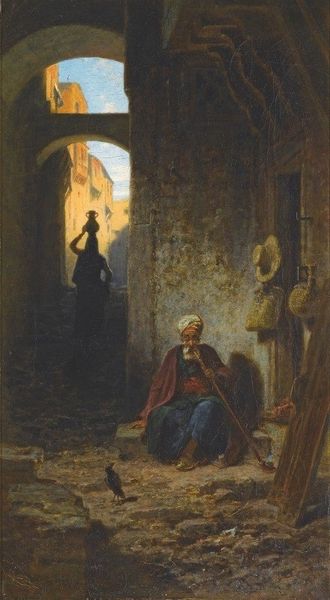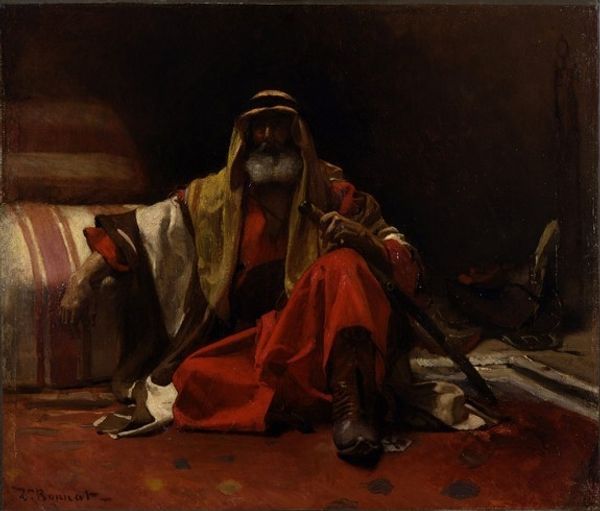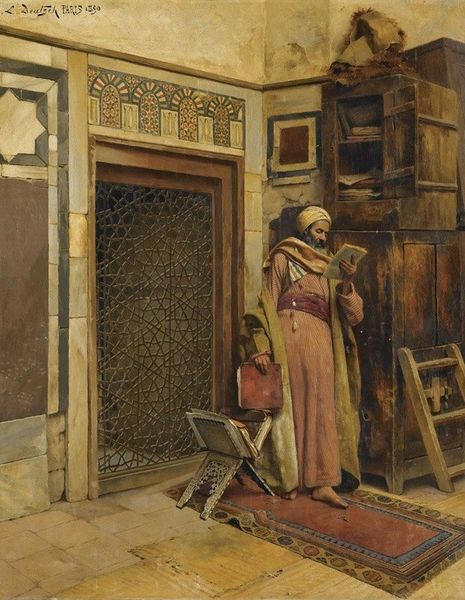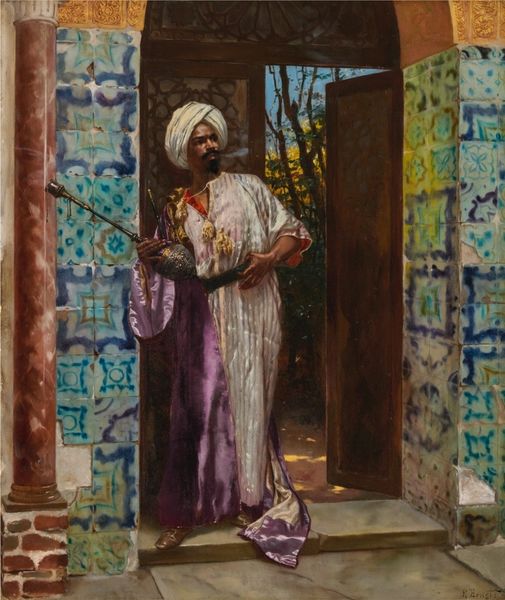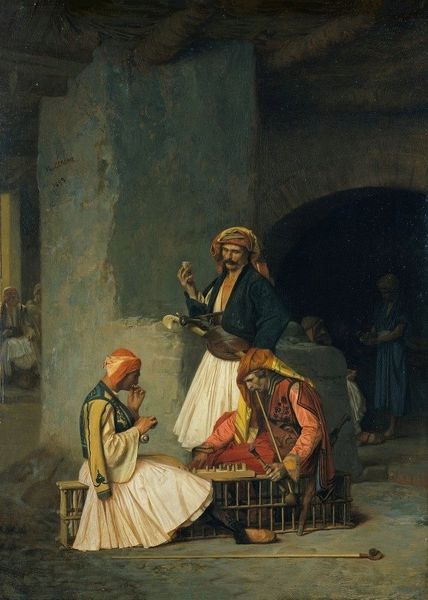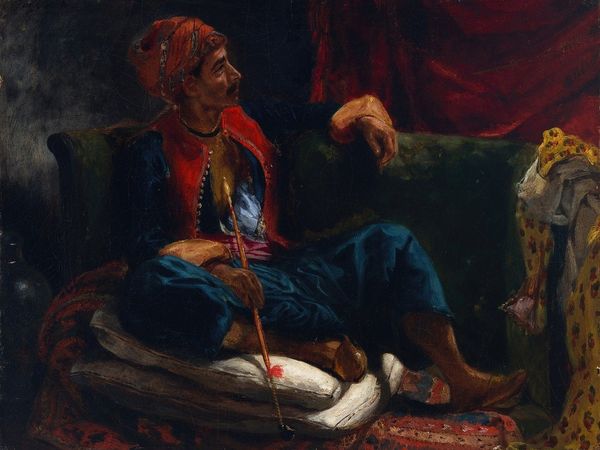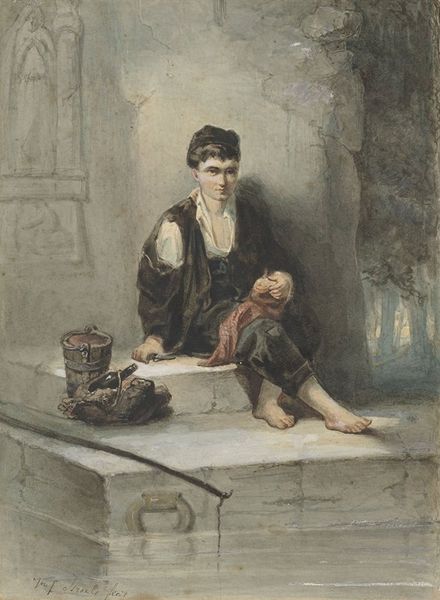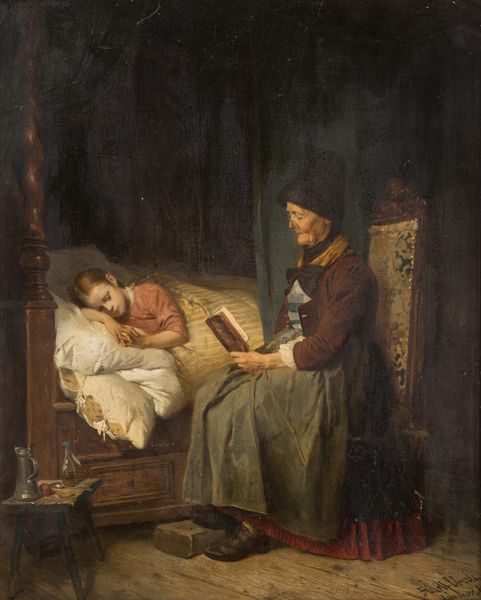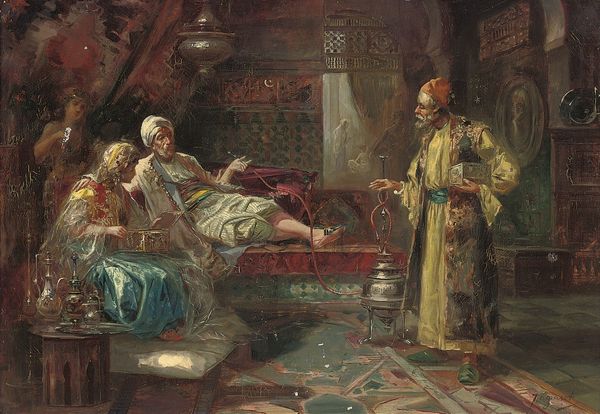
painting, watercolor
#
portrait
#
painting
#
oil painting
#
watercolor
#
male-portraits
#
genre-painting
#
portrait art
#
watercolor
Dimensions: 20.5 x 14.1 cm
Copyright: Public domain
Curator: Welcome. Today, we are exploring James Tissot's "The Tailor, Old Testament series", a watercolor and oil painting from 1902, now residing here at the Jewish Museum. Editor: Gosh, what hits me first is how intimate it feels. It’s not grandiose, like you’d expect from "Old Testament," you know? More like peering into someone's life. It reminds me a little bit of Rembrandt's domestic scenes with that same subdued color palette. Curator: Tissot’s works from this period aimed to visualize biblical scenes in a way that felt accessible to his contemporary audience. He traveled to the Middle East to make sketches of landscapes, architecture, costumes, and people and to steep himself in the cultures and atmospheres of Biblical times and the Holy Land. It reflects a broader trend within religious art of the late 19th and early 20th centuries: attempting to bridge the gap between the sacred texts and modern life. Editor: I see that! The tailor himself—his face, so worn—he’s intensely focused on the task at hand, cutting this beautiful blush-toned fabric. You can almost hear the snip of the scissors. He has all these fabulous details—that almost cartoon-like hat, for one. He feels utterly real, a working person caught in a very ordinary moment. Curator: Indeed. By focusing on the everyday realities of figures within the Old Testament, Tissot humanizes the characters and suggests a timelessness to the human condition. The objects scattered around him – the rug, the open sandals – paint a scene that situates viewers firmly in time and place. These touches underscore the cultural specificity that Tissot attempted to bring to biblical narratives. Editor: It also makes me consider labor and craftsmanship, and how these "smaller" everyday narratives, though often ignored, are just as valid or beautiful as those that glorify leaders, military successes, or heroic actions. He appears as a humble yet proud artist. Curator: That is interesting; the symbolism is not as direct as many religious paintings. His attempt to capture mundane labor serves as a reminder that value lies in the unseen efforts, in quiet dedication, which perhaps is an appropriate parallel for the time Tissot dedicated to realizing the figures from the Old Testament. Editor: I'm leaving with a greater respect for those untold stories—the texture of real lives woven into the grand narrative of history. Curator: Yes, a lovely meditation on the dignity found within common human experience.
Comments
No comments
Be the first to comment and join the conversation on the ultimate creative platform.
